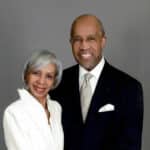
As advisors, we are expected to see potential issues and opportunities for clients before they present themselves. So, it’s understandable that a proactive approach to planning is more ideal than a reactive one. It’s what clients have come to expect, and honestly, what they deserve.
It’s easy to find ourselves overwhelmed with the endless options available to customize a financial plan, but I have found the following key areas to be the most important to help ensure you are designing plans specially tailored to each client.
The Cost of Health
It may go without saying that the better we take care of ourselves, the less likely we’ll run into healthcare issues in the future — but if the past couple of years have taught us anything, it’s that we can’t plan for everything in life. However, that does not mean that we can’t take steps as advisors to help our clients account for both expected and unexpected healthcare expenses.
For clients who plan to retire at 65, re-engage them for a more in-depth healthcare discussion when they hit their 50s. As they get closer to their target retirement age, they in turn have less time to accumulate assets before that retirement time frame, which is why these pre-retirement planning years are so crucial. It’s often a race against the clock and there is very little room for error, especially when it comes to something as important as one’s health.
Most people incorrectly assume Medicare will cover all of their healthcare costs in retirement and they are unpleasantly surprised when they find out that it does not. It’s important to know which of the supplemental Medicare plans will provide your clients with the appropriate coverage for their individual healthcare needs. For options like Medicare Parts A, B, and D, as well as Medicare Advantage and “Medigap” supplemental insurance plans, make sure you are familiar with what is and is not covered under each of the different parts and plans, and the different costs associated with each of them. My recommendation is to perform an updated insurance analysis six months in advance of a client retiring to make sure the plan is as current as possible.
Think Like Every Day is Tax Day
It’s become increasingly more common for clients to expect tax strategies to be built into their plans. As if taxes aren’t complicated enough, the rate at which they change from year to year only exacerbates the issue. It’s our duty to be up-to-speed on current tax laws, the latest proposed changes and potential strategies to account for each. Just because you may not have a CPA, CTS, ATA,or other designation, this doesn’t mean you shouldn’t have some semblance of potential tax mitigation strategies for your clients.
Something I’ve found particularly valuable is continuing my own education as a member of Ed Slott’s Elite IRA Group, where a group of IRA experts regularly train and collaborate on ways to help keep clients’ retirement dollars safe from unnecessary taxes. Participating in a similar group, or taking online continuing education courses, are great ways to keep current on tax strategies without having to specialize in those services.
The tax variable opens up a whole new world of customized solutions during the planning process. Again, strategies are dependent on each individual’s circumstances, but some options to consider include:
Planning for Required Minimum Distributions (RMDs)
Factor in these distributions every year, and specifically which accounts they will be pulled from and how they will impact your clients’ taxable income in retirement.
Roth Conversion Strategies
Evaluate your clients’ current and future expected tax liabilities to help reduce the total tax impact on their retirement accounts. Roth IRA conversions make it so clients do not have to take RMDs when they reach age 72. Remember to have clients pay the tax bill on the conversion before they file their taxes.
Health Savings Accounts (HSAs)
The contribution limits for HSAs increased for 2022, allowing clients to spend less on qualified medical expenses while reducing their tax bill for the current year. For 2022, individuals can contribute up to $3,650, or up to $7,300 for a family plan. People over 55 are allowed additional “catch-up” contributions of $1,000 every year to help cover the rising cost of healthcare.
Whole Life Insurance Policy as an Asset
Beneficiaries of life insurance policies receive tax-free payouts, unlike with other retirement plan options. Whole life insurance also grows on a tax-deferred basis throughout the the owner’s life or until the policy is redeemed. The interest on the cash value is applied to the higher, tax-deferred amount, allowing for faster growth.
Charitable Giving
Philanthropic giving is a great way for clients to make a positive difference, and their generosity can often have substantial tax-related benefits when built into a retirement plan. However, the Tax Cuts and Jobs Act of 2017 brought in a higher standard deduction, making it less likely for taxpayers to itemize their deductions. So, for clients that give regularly, one strategy to consider is combining a few years’ worth of donations into one larger donation, if they are able to do so. By increasing charitable donations during their higher-income years (pre-retirement) they can plan to take the standard deduction during their later, lower-income years.
Bridging the Income Gap
Income planning is key to differentiating, and customizing, a financial plan. When planning for any potential income gaps, the most important aspect to consider is the order in which we start to draw funds, as that can be a major determining factor in how long one’s funds will last.
Using several different models to calculate multiple possible strategies will help you determine the best income distribution strategy for each client’s specific situation. This allows you to demonstrate how long their income could potentially last in retirement, and it gives you a roadmap for maximizing portfolio longevity and tax efficiency. You need to test these different retirement scenario models before your clients start to claim their Social Security benefits! Once the plan is in place, you can then start to assess the role inflation to maximize long-term growth.
Address Ambivalence and Apprehension
If we’ve done our jobs correctly, we should feel confident that the plans we’ve created for our clients will account for any potential income gaps. But we also shouldn’t forget to address feelings of ambivalence or apprehension that clients may be experiencing.
“Think about it: They’ve worked hard, saved up and have finally reached the point where they are ready to retire. From their point of view, the scary part is actually drawing down the assets they’ve accumulated over their lifetime.”
Think about it: They’ve worked hard, saved up and have finally reached the point where they are ready to retire. From their point of view, the scary part is actually drawing down the assets they’ve accumulated over their lifetime. Many of us can experience anxiety and fear when we are about to enter a new chapter of our lives. Reassuring clients is a foundational part of the job, but during this pivotal moment it’s especially vital.
Schedule a meeting where you can go over your client’s plan one last time and explain why specific decumulation planning decisions were made – why you are using pre-tax assets first, or why you are taking Social Security early, and so on.
Inspire Confidence
Try to hold these conversations in person, and use a comforting tone. Start by expressing that you can understand how beginning a new chapter, like retirement, can seem scary, and daunting – and then remind them that you’ve been working together for a long time to carefully plan ahead for this moment. Afterward, walk clients through how market downturns or other events would affect their income in retirement, and the provisions in their plans which are designed to protect that income.
Working with clients to design retirement plans which are tailored specifically to them can give them confidence, and peace of mind, that they will be able to enjoy a financially secure retirement. Focusing on a few key areas for customization can make it much easier for advisors to create more meaningful plans for helping clients meet expenses and long-term financial goals during retirement.
James “Beau” Henderson is the founder of RichLife Advisors LLC, a wealth and retirement planning firm that provides pre-retirees and retirees with holistic wealth management services. His firm provides investment advisory services through Fiduciary Capital, Inc. Beau is a licensed insurance professional in Georgia and holds RICP, CLTC and Certified Financial Fiduciary licensing.







